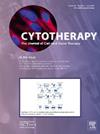Improving lung cancer tumor-infiltrating lymphocyte (TIL) manufacturing
IF 3.2
3区 医学
Q2 BIOTECHNOLOGY & APPLIED MICROBIOLOGY
引用次数: 0
Abstract
Background
The successful treatment of melanoma using autologous in vitro expanded tumor infiltrating lymphocytes (TILs) has sparked clinical trials for the assessment of TIL efficacy against other cancers, including non-small cell lung cancer (NSCLC). This rise in clinical applications of TILs has increased the need for improved, more streamlined and cost-effective manufacturing protocols. The aim of this study was to simplify and reduce the cost of traditional TIL manufacturing protocols while maintaining GMP manufacturing compliance, yields, and quality of the TIL product.
Methods
Resected lung tumors were cultured to expand TILs. In side-by-side experiments, we evaluated media formulations, supplementing reagents, reagent concentrations, TIL activation methods and cryopreservation protocols. The optimizations aim to reduce labor, reagent cost, culture times, and open step manipulations. The resulting TIL products were compared against TILs produced using the Moffitt Cancer Center published protocol. We compared cell yields, viabilities, phenotypes, and TIL cytotoxic activity against matched tumor organoids.
Results
TILs were successfully expanded from 35 fragmented tumor samples using T-cell specific media in place of RPMI, human AB serum in place of human platelet lysate and α-CD3/CD28 nanobeads in place of feeder cells for cell activation. Culture duration was reduced from 6 to 7 weeks to 4 weeks and the final product contained an average of 200e9 TILs that were predominantly of the memory phenotype and effectively killed matched tumor cells. While TIL yields and phenotypes were comparable to those produced by the Moffitt Cancer Center protocol, cytotoxicity against matched tumor cells was superior.
Conclusion
Traditional TIL manufacturing protocols could be optimized and streamlined into a more cost-effective process for a TIL product that is cytotoxic to tumor cells and yields quantities suitable for clinical studies.
改善肺癌肿瘤浸润性淋巴细胞(TIL)制造。
背景:自体体外扩增肿瘤浸润淋巴细胞(TIL)治疗黑色素瘤的成功已经引发了TIL对其他癌症(包括非小细胞肺癌(NSCLC))疗效评估的临床试验。TILs临床应用的增加增加了对改进的、更精简的和具有成本效益的制造方案的需求。本研究的目的是简化和降低传统TIL生产方案的成本,同时保持TIL产品的GMP生产合规性、产量和质量。方法:对切除的肺肿瘤进行TILs扩增培养。在并排实验中,我们评估了培养基配方、补充试剂、试剂浓度、TIL激活方法和冷冻保存方案。优化的目的是减少人工、试剂成本、培养时间和开放步骤操作。将所得的TIL产品与使用莫菲特癌症中心公布的协议生产的TIL进行比较。我们比较了细胞产量、存活率、表型和TIL对匹配肿瘤类器官的细胞毒性活性。结果:用t细胞特异性培养基代替RPMI,用人AB血清代替人血小板裂解液,用α-CD3/CD28纳米粒代替饲养细胞活化,成功地从35个碎片化肿瘤样本中扩增出TILs。培养时间从6 - 7周减少到4周,最终产品平均含有200e9个以记忆表型为主的til,并有效杀死匹配的肿瘤细胞。虽然TIL的产量和表型与Moffitt癌症中心方案产生的结果相当,但对匹配肿瘤细胞的细胞毒性更强。结论:传统的TIL制造方案可以优化并简化为更具成本效益的TIL产品工艺,该产品对肿瘤细胞具有细胞毒性,并且产量适合临床研究。
本文章由计算机程序翻译,如有差异,请以英文原文为准。
求助全文
约1分钟内获得全文
求助全文
来源期刊

Cytotherapy
医学-生物工程与应用微生物
CiteScore
6.30
自引率
4.40%
发文量
683
审稿时长
49 days
期刊介绍:
The journal brings readers the latest developments in the fast moving field of cellular therapy in man. This includes cell therapy for cancer, immune disorders, inherited diseases, tissue repair and regenerative medicine. The journal covers the science, translational development and treatment with variety of cell types including hematopoietic stem cells, immune cells (dendritic cells, NK, cells, T cells, antigen presenting cells) mesenchymal stromal cells, adipose cells, nerve, muscle, vascular and endothelial cells, and induced pluripotential stem cells. We also welcome manuscripts on subcellular derivatives such as exosomes. A specific focus is on translational research that brings cell therapy to the clinic. Cytotherapy publishes original papers, reviews, position papers editorials, commentaries and letters to the editor. We welcome "Protocols in Cytotherapy" bringing standard operating procedure for production specific cell types for clinical use within the reach of the readership.
 求助内容:
求助内容: 应助结果提醒方式:
应助结果提醒方式:


